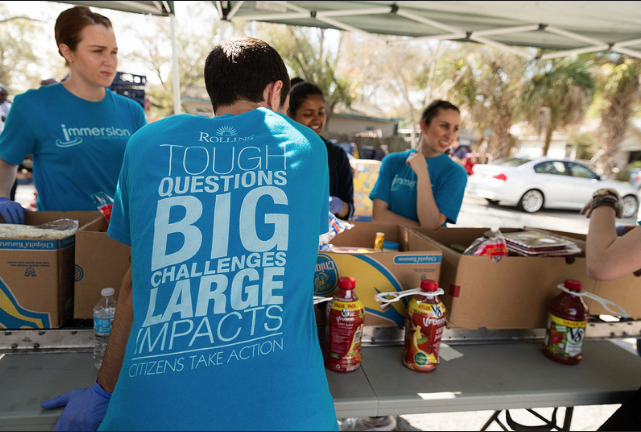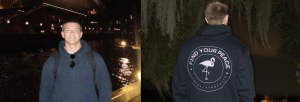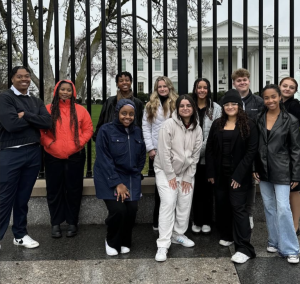
You have received the e-mails full of color and bursting with smiling faces alongside tons of information. You have heard the stories, too, and maybe you have even regretted not fully reading that colorful informative e-mail or signing up, since you most likely sat in your room not really doing anything—although you swore that this weekend would finally be your weekend to catch up! Yeah, about that. Maybe you should have gone ahead and signed up to go out on that immersion, so that you could have come back with amazing impactful memories like your roommates did.
Although often mistaken for being an office, Immersion is “a student-led program/organization that is… wide reaching… [and] that collaborates with a lot of different offices on campus,” states student coordinator Bethany Eriksen ’15. Like any other student organization on campus, the Immersion organization has an advisor, as well as many other important positions: everyone from facilitators to the social media chair. If you have not yet noticed, the issues addressed by Immersion are social justice issues; these differ from academic field studies which pursue academic enlightenment. The organization belongs to a larger national movement known as the Alternative Break Movement. Self-branded Immersion provides students and faculty with the opportunity to take part in both weekend and week-long immersions. As Eriksen ‘15 puts it, “the idea behind the alternative break movement is to take students outside of their college bubble and immerse them in different communities to learn about social justice issues, [also known as] impact areas. We’re focused on social justice and understanding the root causes of these issues and then going forth and doing something; all of our trips are focused on doing direct community service.” Immersion works with community partners, including non-profit organizations and government organizations. The organization works alongside these partners to learn from different perspectives, to better their awareness about communities, and to work as active Rollins citizens to help combat these issues.
So how are these issues chosen? As other student coordinator Melissa Looby ’15 explains, it is based on the facilitators. One goes through training and applies to facilitate for a semester, and while they are around one another they learn about each other’s varied passions. Immersions stem from these passions and genuine concerns in regards to communities; LGBT equality, alternative therapies, and global health are some of the issues that have been addressed by Immersion. “I think if we mandated specific themes it would seem very structured. This way it’s organic and people are passionate about these things,” says Looby ‘15. In addition to addressing the passion behind these issues and finding where concerns lie, some issues receive a lot more interest than others. Immersion will revisit certain issues while at the same time expanding their palette of issues to be addressed, looking into causing a strong community presence, and simultaneously developing a growing active presence in other communities. This means also going beyond the greater Central Florida area; our Immersion organization has been to Miami, St. Petersburg, Memphis, Colorado, Nashville, West Virginia, Washington D.C., and even the Bahamas.
There is no limit to service, either. Immersion sends out an application every semester to other Rollins student organizations that invites them to have their own immersion; faculty can have a class go out to an immersion also. They encourage and love the opportunity it provides for these other organizations, fraternities and sororities, and faculty/students to take part in. Eriksen and Looby ‘15 rave that through Immersion you can see issues through many lenses. These reflections help affirm and reaffirm how essential community development is. With these immersions and experiences—as they emphasize experiences, not trips—they “take service to the next level by saying okay, what’s next? Now what can we do? Students come back [with] this feeling that they have a responsibility to take action,” says Looby ‘15, discussing how immersion can help students find their passion.
Speaking with Looby and Eriksen ‘15 and hearing stories of their immersions and how they became involved was an inspiring, eye-opening interview because I do not think many Rollins students are aware of how impactful and amazing these immersions are and can be for every individual. As someone who has been that person to bypass an immersion email and think, “oh maybe next time, I have got a bunch of stuff to do this weekend and catch up on,” I guarantee that this is something that will not happen again.
To be a part of an Immersion, simply open up your Rollins e-mail (as this is the main source of sending out information) and fill out that application with your best foot forward. Sometimes with only 12 spots available and 40 applying, you have to take the application very seriously and let them know your aspirations and what you can contribute. An Immersion is an experience I hope to take part in very soon and am eager to apply for. If you are unsure of the next Immersion because you might have deleted your emails, no worries: applications are due September 25 for the fall break immersion in Savannah, Georgia (October 10-13). This Immersion will focus on “discovering the intersections between gender and the media. We will partner with non-profit organizations that explore gender differences as well as learn about historic and current artistic portrayals of femininity and masculinity.” For first-years only, applications are due September 30 for Hot and Sweaty in the Swamp Everglades Immersion where first year students will be “working with the National Park Service and learning how to effectively protect the environment. The experience will also offer exciting cultural opportunities for participants to engage in, including: a wet walk, an iron chef competition, and quality time exploring this fragile environment.”
Photo taken by Scott Cook during last year’s alternative spring break immersion to Tampa, FL






Be First to Comment